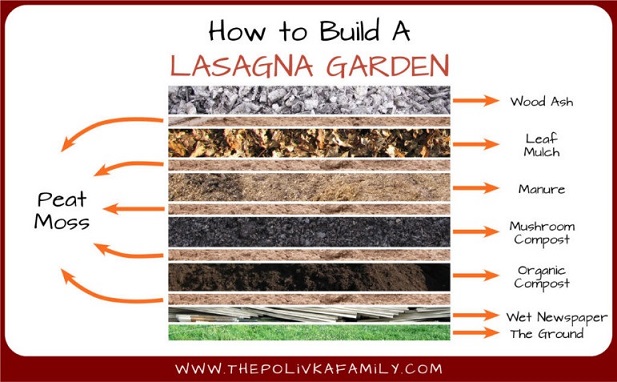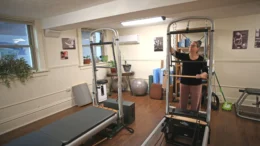Learn how to create new garden beds without removing current vegetation and digging up the soil.
The amount of work usually associated with creating a new garden bed can be challenging. Removing grass and weeds, digging up the area, and incorporating fertilizer or other amendments into the soil can be labor-intensive.
Fortunately, there is a way to make a new garden bed without all that effort — sheet composting or sheet mulching. Sheet composting is best suited to create beds used for growing vegetables and annuals or plants that prefer rich, fertile soil. To prepare an area for sun-loving native perennials that thrive on poor soils, we recommend sheet mulching which is even easier. More about this at the end of the article.
Sheet composting allows you to create a bed of fertile soil with minimal digging.
Instead of removing the existing lawn or weeds, sheet composting builds the new bed on top of them. Sometimes referred to as lasagna gardening, sheet composting utilizes layers (just like a pan of lasagna) of organic materials. The organic materials, including the grass and weeds, gradually decompose and enrich the soil. Sheet composting significantly reduces digging and, once the layers are in place, all the gardener needs to do is wait. The process can take as much as six months or more, so fall is an ideal time to begin the process. Decomposition will occur over the winter and the new garden bed will be ready for planting the following spring.
An ample supply of cardboard or newspaper and plenty of organic materials are needed for sheet composting. These organic materials are divided into two types: Those which supply nitrogen and those which supply carbon. Nitrogen sources include composted horse or cow manure, fresh grass clippings, spent annuals, fruit/vegetable scraps, used coffee grounds, and green leaves as well as alfalfa pellets and cottonseed meal. Carbon sources include cardboard, newspaper, wood chips, sawdust, pine needles, and dry leaves (another reason to do sheet composting in the fall—you can put all those falling leaves to good use). Garden debris that contains weed seeds or diseased materials should not be used in sheet composting. Unlike traditional composting, during which weed seeds and disease organisms are killed as the pile heats up, sheet composting is a cold composting process and will not kill diseases or seeds.
Sheet Composting Steps
1. Mow any grass or weeds in the space that will become the new bed. Use the lowest possible setting on the mower and leave the clippings in place to increase organic matter.
2. Cover the entire area of the new bed with cardboard, making sure that the pieces of cardboard overlap to prevent sunlight from reaching the grass or weeds underneath it. If cardboard isn’t available, use sections of pre-moistened newspaper, at least five pages thick. If using cardboard, wet down the entire area once it is covered.
3. Add a nitrogen layer such as compost, well-rotted manure, or grass clippings. This layer should be approximately two inches thick.
4. Add a carbon layer (wood chips, dry leaves, sawdust), which should also be about two inches thick.
5. Repeat with alternating nitrogen and carbon layers until you have reached a height of 18″-36″. This may sound a bit high, but remember the materials will shrink down as decomposition occurs.
6. Cover the entire bed with a carbon layer such as bark or mulch as a top dressing and wet it down lightly with a hose.
The bed is ready to plant vegetables or annuals when the materials have decomposed to the point where individual ingredients are no longer recognizable.
Sun-loving native perennials which evolved in natural meadows, usually do not prefer rich soil. To convert lawn or uncultivated soil for these meadow plants, follow the first two steps above, and add a 2-3″ layer of mulching material such as leaves, grass clippings, or hardwood mulch. The mulch provides some weed and moisture control for the first season.
For more information, watch the video Lawn to Garden Bed in 3 Steps.
This educational blog is a series of informative articles from the Penn State Master Gardeners volunteers plus news concerning the group and their activities. For more information, click here.




































